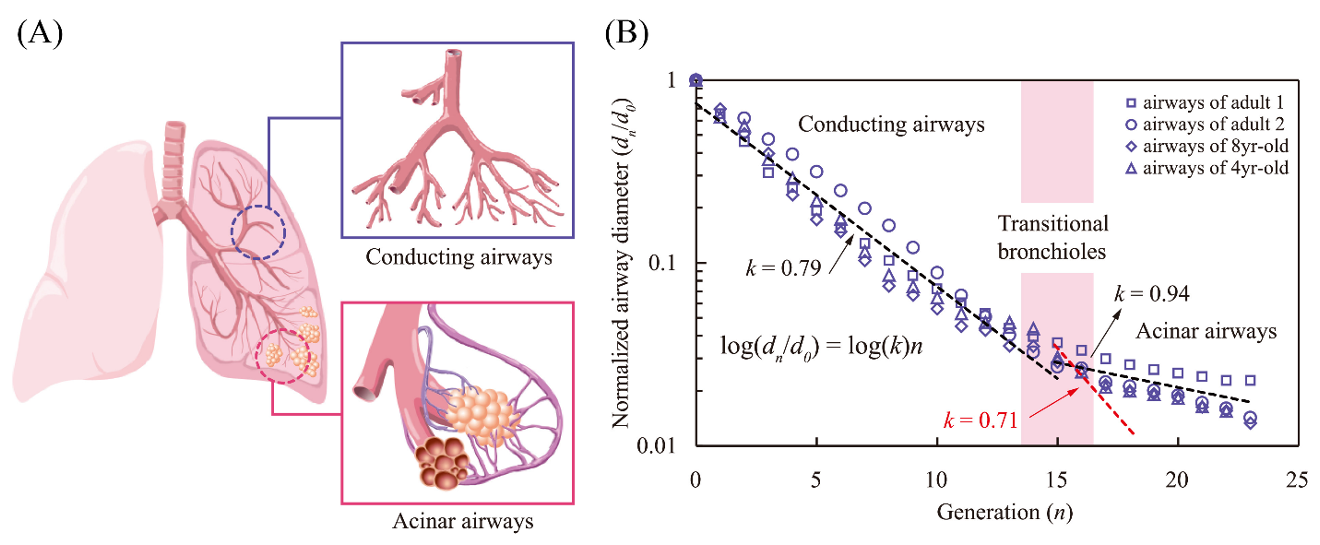at the deep region of the lungs
optimal transport in dichotomous transport network
In the airway network of a human lung, the airway diameter gradually decreases through multiple branching. The diameter reduction ratio of the conducting airways that transport gases without gas exchange is 0.79, but this reduction ratio changes to 0.94 in acinar airways beyond transitional bronchioles. While the reduction in the conducting airways was previously rationalized on the basis of Murray’s law, our understanding of the design principle behind the acinar airways has been far from clear. Here we elucidate that the change in gas transfer mode is responsible for the transition in the diameter reduction ratio. The oxygen transfer rate per unit surface area is maximized at the observed geometry of acinar airways, which suggests the minimum cost for the construction and maintenance of the acinar airways. The results revitalize and extend the framework of Murray’s law over an entire human lung.
